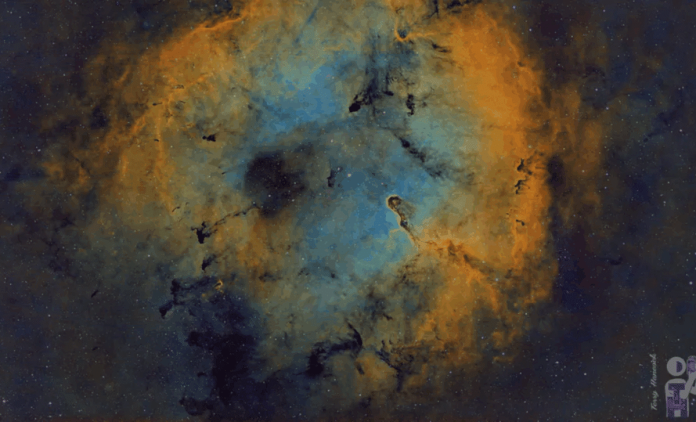An amateur astrophotographer has brought to light a breathtaking view of a distant stellar nursery. Using custom-built gear and hundreds of hours of exposure, the resulting image reveals intricate cosmic structures invisible to the naked eye.
Set within the Cepheus constellation, this detailed portrait of the Elephant Trunk Nebula uncovers a dynamic interplay of interstellar dust and glowing gas.
The photographer’s process, effort, and use of advanced imaging software helped turn faint nebular wisps into a vibrant mosaic of star formation.
A Window Into A Stellar Womb
Terry Hancock, an astrophotographer based in Whitewater, Colorado, captured the image of IC 1396, commonly known as the Elephant Trunk Nebula, with astonishing clarity. This star-forming region lies approximately 2,400 light-years from Earth in the constellation Cepheus and features a dark, sinuous pillar of dust stretching across space — an iconic structure that gave the nebula its name.
Hancock’s method involved a 180mm Newtonian reflector telescope combined with a custom astronomy camera. Over the span of 114 hours, he meticulously gathered light through narrowband filters, each tuned to isolate specific wavelengths emitted by ionized gases. He later combined and refined this data using PixInsight and Adobe Photoshop, unveiling a composition that reveals subtle structures buried in darkness.
Space.com shared Hancock’s image and described it as a masterful juxtaposition of light and shadow within a vast emission nebula — a type of nebula energized by ultraviolet light from embedded young stars.
“The image highlights various celestial elements, including a notable emission nebula, by contrast against the bluish cavity that fills the center of IC 1396,” Hancock told Space.com in an email.
The full nebular complex spans over five degrees of the sky, which is about ten times the width of a full moon. Yet to the human eye, it appears only as a faint haze under optimal dark-sky conditions. Thanks to technological advancements and patient dedication, astrophotography like this transforms invisible cosmic phenomena into mesmerizing art.

Dust, Gas, And The Birth Of Stars
What makes the Elephant Trunk Nebula so compelling to astronomers and astrophotographers alike is its dynamic environment. This swirling region is rich in cosmic dust and molecular gas, making it an incubator for newborn stars. The dense filaments seen in Hancock’s photo are more than just visual curiosities — they are the raw material for stellar evolution.
The bluish void surrounding the trunk-like structure hints at past stellar activity: high-energy winds and radiation from nearby massive stars have cleared the surrounding gas, carving out a cavity and compressing the remaining material into new stars. This interplay of destruction and creation is central to understanding stellar lifecycles.
While professional observatories have mapped IC 1396 extensively, high-resolution amateur efforts like Hancock’s offer a fresh perspective. The level of detail and color fidelity in this image allows viewers to distinguish hydrogen-rich regions glowing red from oxygen-emitting areas glowing teal, creating a color-coded map of interstellar chemistry.
Astrophotography of this caliber serves more than aesthetic purposes — it sparks public curiosity, supports amateur science, and contributes to a broader appreciation of the dynamic universe in which we live.
From Backyard Telescope To Global Showcase
Hancock’s equipment and techniques may be niche, but they reflect a growing global community of dedicated amateur astronomers pushing the limits of what’s possible from Earth’s surface. His camera setup — tailored for low-noise, high-efficiency imaging — is designed specifically for long exposures of dim targets like IC 1396.
Using narrowband filters, he isolated light emitted by elements such as hydrogen-alpha, oxygen-III, and sulfur-II, creating a composite image that not only stuns visually but also reveals the nebula’s internal structure with scientific precision.
This project also emphasizes the importance of digital post-processing in modern astrophotography. The editing phase, often as complex as the image acquisition itself, allowed Hancock to bring forward contrast, color gradients, and structural clarity that raw exposures alone cannot deliver.
In the growing field of citizen science and digital skywatching, images like Hancock’s don’t just capture celestial objects — they tell a story of time, light, and technical mastery that bridges the gap between hobby and science.








